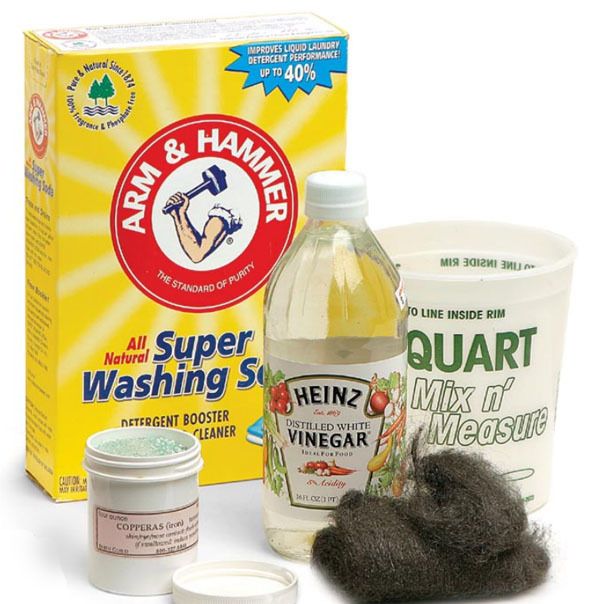Easy-to-Make Stains Offer Unique Effects
Chemical stains are usually lightfast, transparent and less prone to bleeding and transfer than man-made dyes
Synopsis: Jeff Jewitt’s favorite chemical stains are ferrous sulfate, iron buff, and sodium carbonate. In this short article, he describes how to mix and apply these easily available, non-toxic stains. Comparison photos shows how they look on mahogany, white oak, ash, maple, cherry, and pine.
Long before there were man-made dyes, woodworkers discovered that chemicals could change the color of wood. Applied chemicals react with others naturally present in the wood to form compounds that add color or an aged appearance.
There are several reasons why woodworkers still should consider chemical staining. First, the chemical reaction usually produces a pigment colorant within the wood fibers rather than one that sits on top. This makes the color lightfast, transparent, and less prone to bleeding and transfer. (Transfer happens when a clear finish is brushed or wiped on, and it dissolves the stain beneath.) Second, the color intensity depends on the variable concentration of chemicals in the wood, so you get interesting and sometimes offbeat effects not achievable with regular dyes.
Rules that apply to all chemical stains
The three chemicals that I use to stain wood—ferrous sulfate, iron buff, and sodium carbonate—aren’t toxic or caustic. However, all chemicals need to be treated as hazardous and kept out of the reach of children.
One important thing to remember when using chemical stains is that the reaction between chemicals and wood is highly unpredictable, so you should test the color on a scrap of wood, the same kind used in your project. Likewise, avoid using sapwood or boards from different trees in the same panel. If you need to control the color closely, such as when trying to match an existing finish, it’s far better to use dyes or pigment stains.
Most chemicals can be purchased as powders (with the exception of iron buff) and dissolved in warm water. A starting point is 1 oz. powder (by weight; equals roughly 2 tablespoons) to 1 qt. water. Add the chemical to the water while slowly stirring. Wait for the solution to cool to room temperature and strain the mixture to remove any residue. Try the mixture on a test piece and dilute as necessary.
All of the chemicals are applied the same way as a water-based stain. Flood the surface evenly and liberally using a synthetic bristle or foam brush, working from the bottom to avoid drips on bare wood, and then blot up the excess. Never spray a chemical stain. Wait at least four hours for the color to develop completely. If you don’t want to apply another coat, make sure you rinse the wood with plenty of clean water to neutralize any residue.
From Fine Woodworking #175
For the full article, download the PDF below:



















Log in or create an account to post a comment.
Sign up Log in